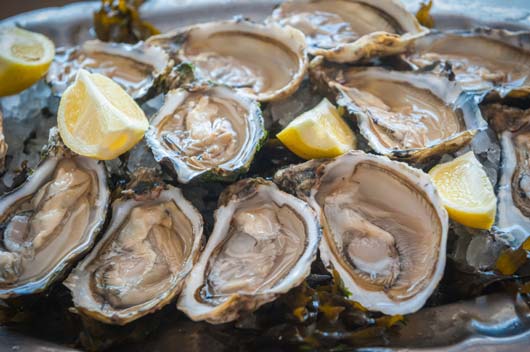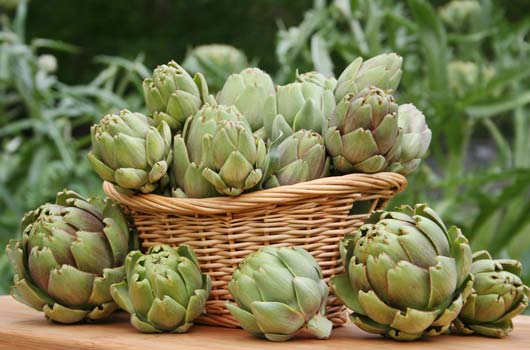
We love artichokes, but how to make artichokes is a whole other issue. In terms of intimidating vegetables, these guys are pretty high up on the “how do I cook that?” list. They look funny, they seem difficult to make and even more tricky to cut up and serve. But don’t be fooled by the leafy exterior and fancy form, artichokes are actually incredibly easy to prepare and trim, and it’s worth every bit of effort required to enjoy these delicious and nutritious gems.
Artichokes are loaded with good-for-you nutrients. They contain a lot of fiber and can aid in indigestion, reducing discomfort from digestive problems and acid reflux. In addition, as Livestrong reports, “the U.S. Department of Agriculture Nutrient Database reports that one medium artichoke delivers 15 percent of the recommended daily intake of vitamin C, based on a 2,000 calorie-a-day diet.” Health benefits aside, artichokes also happen to be really yummy and really fun to eat and serve. Plus your friends will be impressed, because they look like they require far more skill to make than they actually do.
Read Related: Leaves of Splendor: 10 Artichoke Recipe Ideas that Always Win
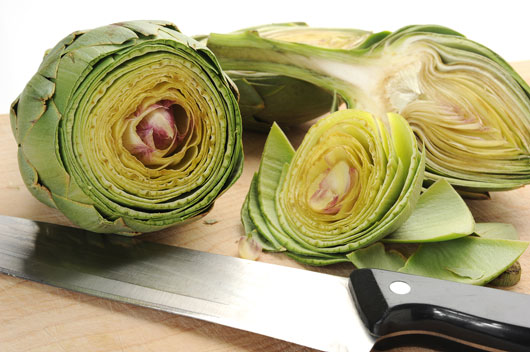
Before we get into how to make artichokes, let’s break it down. There are a few parts of the artichoke: the leaves, the heart and the choke. The outer leaves on the artichoke, which are hard, each have a fleshy base, which you can eat by tearing off a leaf and sucking off the softer flesh. It sounds weird, but it’s delicious. In addition, the base of the artichoke is called the heart, which is also soft and edible. Lastly, an inedible mass on top of the heart is called the choke—in case the name isn’t obvious enough, you do NOT want to eat that part.
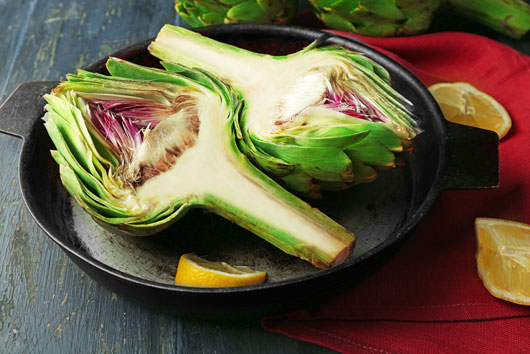
Onto how to prepare an artichoke; it’s important that you clean and trim an artichoke before you cook it, and depending on how you plan to cook and serve your artichoke, there are different pieces of prep work. If you plan to steam the artichoke whole, here are the basics: first, cut off about 1 inch from the top of the artichoke, making the top even. Remember, serving a beautiful vegetable that looks pretty and appetizing is half the battle. Next, snap off some of the outer leaves, which are tough and dryer than the other (inner) leaves. From here, use some good kitchen shears to cut off the thorny tops of the leaves. Next you have a choice: you can simply peel the outer skin off of the stem, or cut it off altogether depending on how you plan to serve your artichoke. If you are going to serve it sitting flat on a platter, you might want to ditch the stem. Once your artichoke is ready, make sure to put it into a bowl of cold water with lemons. As Serious Eats tells it, another option is to use “one half of a lemon…for rubbing on the cut sides of the artichoke (the citric acid can sometimes help slow browning due to oxidation).”
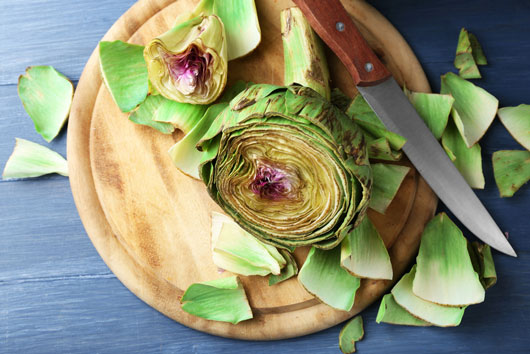
That trimming technique is perfect if you plan to steam the whole artichoke. If you are just looking to use the heart and stem of the artichoke, you need to do a little more work to prepare. You still need to remove the outer leaves, cut off the top of the artichoke and trim the stem. But in addition, you need to also need to cut in towards the heart of the artichoke, gradually trimming away the top and sides, without puncturing the heart itself. Then you need to trim the outer portion of the stem so that you reveal the tender center (which will look lighter in color and feel softer to touch). The last step is removing the choke, which is the furry section in the center, which is tough and inedible. To do this, Culinate says to “pull away the purple-tipped leaves of the choke. Holding the artichoke by its stem, scrape off the choke with a serrated grapefruit spoon or a melon baller. Immediately rub the surface of the heart with lemon,” to prevent browning of the artichoke until you are ready to cook it.
Once all that work is done you can whip up a perfect artichoke dish that you will love to eat and feel good about serving to your family and friends. Happy cooking!





